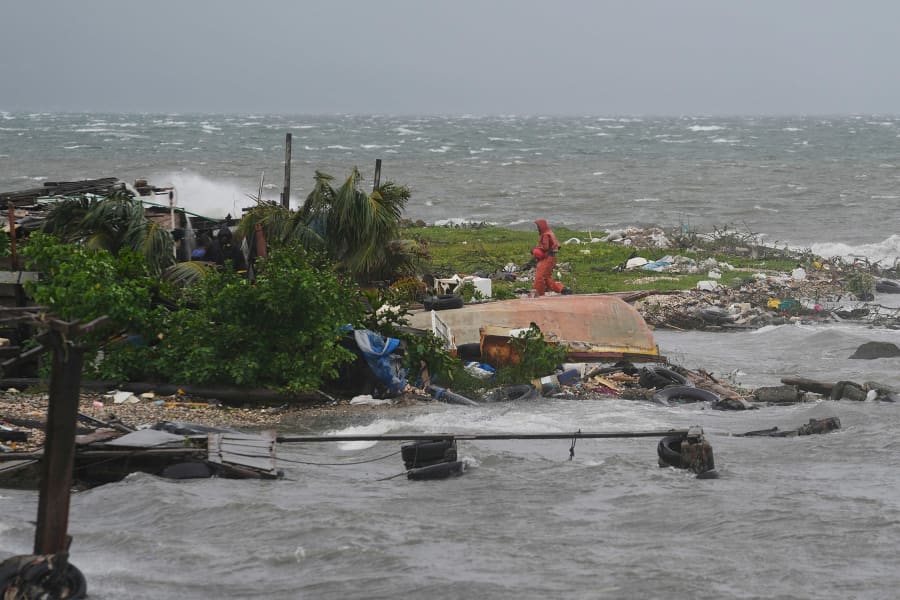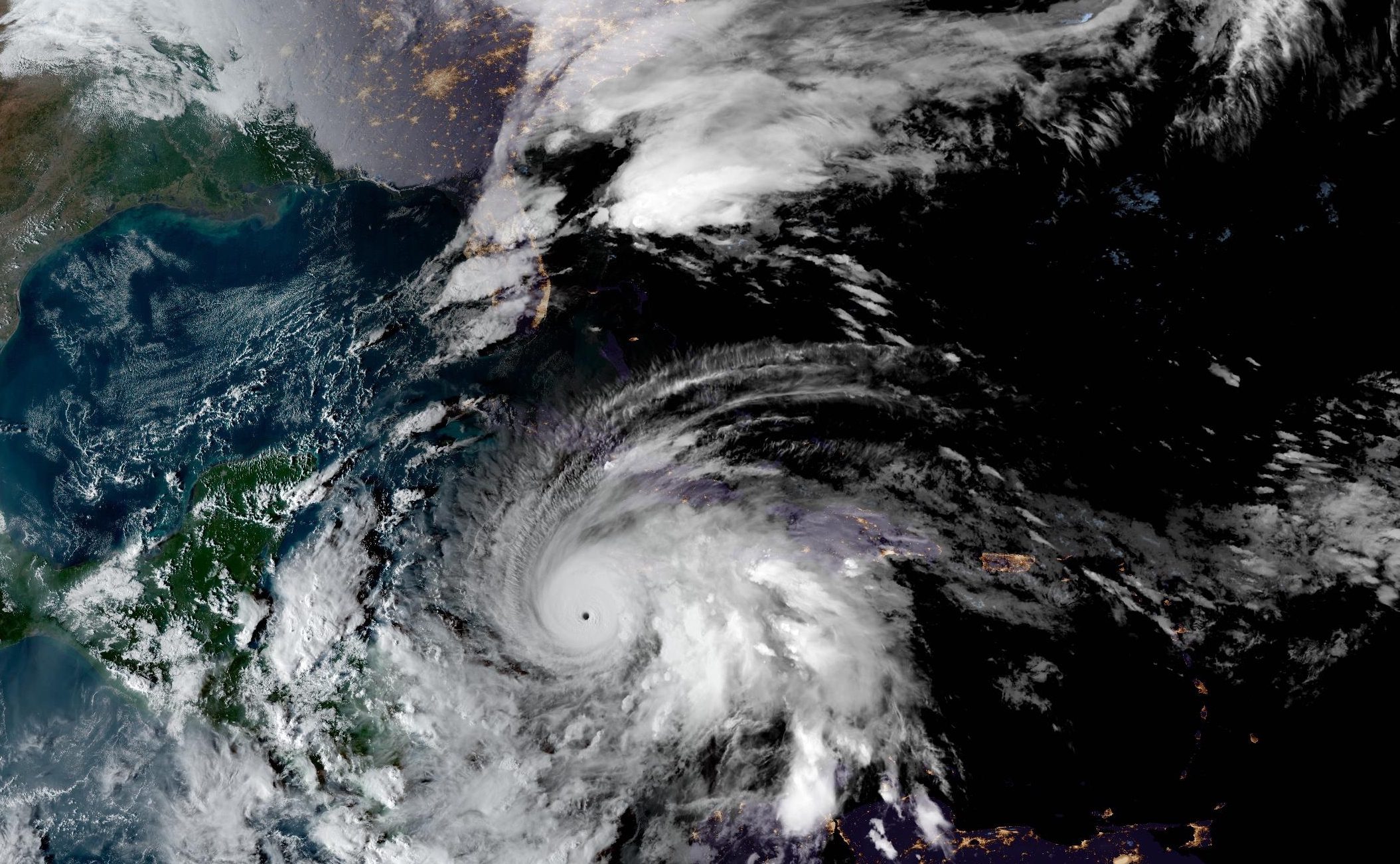Hurricane Melissa has been downgraded to a Category 4 storm after making historic landfall in Jamaica on Tuesday afternoon as one of the most powerful Atlantic hurricanes ever recorded. The National Hurricane Center confirmed the storm struck Jamaica's southwestern coast near New Hope with devastating 185 mph winds before weakening to 150 mph sustained winds as it moved across the island.
The massive storm, which initially made landfall as a rare Category 5 hurricane, continues to pose an "extremely dangerous and life-threatening situation" for residents across Jamaica, bringing catastrophic flooding, destructive winds, and dangerous storm surges that have already left hundreds of thousands without power.
Historic Storm Slams Jamaica With Record-Breaking Intensity
When Hurricane Melissa made landfall at approximately 1 p.m. ET on Tuesday, it became the strongest hurricane to hit Jamaica since record-keeping began 174 years ago. With initial sustained winds of 185 mph and a central pressure of just 892 millibars, Melissa ranks among the most powerful storms in Atlantic history—comparable only to the 1935 Labor Day Hurricane and 2019's Hurricane Dorian.

"For Jamaica, it will be the storm of the century for sure," said Anne-Claire Fontan, a tropical cyclone specialist at the World Meteorological Organization, describing the situation as "catastrophic" for the island nation of nearly 3 million people.
Downgrade to Category 4 Doesn't Diminish Danger
While Melissa has weakened to Category 4 status with maximum sustained winds now at 150 mph, officials emphasize the storm remains extraordinarily dangerous. The downgrade occurred as the hurricane moved over Jamaica's mountainous terrain, which disrupted the storm's structure—a typical pattern for hurricanes making landfall.
Mike Brennan, director of the U.S. National Hurricane Center, warned that even after the storm passes, "the flooding risk and post-storm environment in Jamaica is going to be extremely dangerous with widespread trees and power lines down, significant structural damage." He added that conditions will "remain a very dangerous environment for days, if not weeks, to come."
Widespread Devastation Across the Island
The impact of Hurricane Melissa has been catastrophic across Jamaica. More than 240,000 customers—approximately 35% of the island's electricity users—lost power before the storm even made full landfall. Jamaica Public Service reported outages continue to climb as the storm batters infrastructure.

Reports from across the island paint a grim picture:
- Hospital roofs torn off on the south coast, forcing patient evacuations to higher floors
- Water levels rising to rooftops in Mandeville, requiring emergency rescues during the storm
- Hotel ceilings collapsing in Ocho Rios, with guests sheltering in conference rooms
- The Rio Cobre and other waterways overflowing their banks
- Extensive structural damage to homes, with roofs blown off across multiple parishes
Rainfall and Flooding Create Life-Threatening Conditions
The National Hurricane Center forecasts that Hurricane Melissa will dump between 15 and 30 inches of rainfall on Jamaica, with some mountainous areas potentially receiving even more. This torrential rainfall has already triggered flash flooding and dangerous mudslides across the island.
Storm surge along Jamaica's coast reached up to 13 feet above normal sea levels in areas near the landfall location, inundating coastal communities and causing severe flooding in Kingston and other low-lying areas.

Current Storm Path: Cuba and Bahamas Next in Line
As Hurricane Melissa continues its slow northeast track at just 8 mph, forecasters predict the storm will reach southeastern Cuba as an "extremely dangerous major hurricane" and could still be at major hurricane strength when it moves across the southeastern Bahamas on Wednesday.
Cuba has already evacuated more than 500,000 residents from flood-prone and wind-vulnerable areas, with President Miguel Díaz-Canel stating, "Melissa will arrive with force, and there's great concern about what it could destroy in its wake."
The U.S. Department of State has issued urgent warnings for American travelers in the storm's path, advising them to depart immediately if possible or shelter in place with adequate preparations.
Climate Change Connection
Meteorologists point to several climate-related factors contributing to Melissa's intensity. The unusually warm Caribbean Sea waters provided extra fuel for rapid intensification, while a warmer atmosphere capable of holding more moisture has led to the extreme rainfall totals. Additionally, higher sea levels driven by melting glaciers and warming oceans have worsened the storm surge flooding.
Melissa's slow movement—a characteristic increasingly observed in hurricanes—means the storm can dump rain on a single location for extended periods, dramatically worsening flood conditions.
Safety Warnings Remain in Effect
Jamaican authorities continue urging residents to shelter in place throughout the night as dangerous conditions persist. The National Hurricane Center advises people to avoid fallen trees, put as many walls as possible between themselves and the outside, and cover themselves with mattresses while wearing helmets for added protection.
Officials have also issued unusual warnings about displaced crocodiles, as rising floodwaters may force the reptiles from their natural habitats into residential areas.
Historical Context
Hurricane Melissa joins an elite group of the most powerful Atlantic hurricanes on record. Only Hurricane Allen in 1980 produced higher sustained winds at 190 mph, though Allen weakened before landfall. Melissa's landfall intensity matches that of the catastrophic 1935 Labor Day Hurricane and 2019's Hurricane Dorian, both of which caused tremendous destruction.
For Jamaica specifically, no hurricane in the island's recorded history has approached Melissa's power, making this truly an unprecedented disaster for the Caribbean nation.
Frequently Asked Questions
Why was Hurricane Melissa downgraded from Category 5 to Category 4?
Hurricane Melissa was downgraded as it moved over Jamaica's mountainous terrain, which disrupted the storm's structure and caused wind speeds to decrease from 185 mph to 150 mph. This is a normal pattern when hurricanes make landfall over elevated terrain.
How does Hurricane Melissa compare to other historic storms?
Melissa ranks as one of the strongest Atlantic hurricanes ever recorded, with landfall intensity matching the 1935 Labor Day Hurricane and 2019's Hurricane Dorian. It's the most powerful storm to hit Jamaica in 174 years of record-keeping.
Where is Hurricane Melissa headed next?
After crossing Jamaica, Hurricane Melissa is forecast to move northeast toward Cuba, then continue to the Bahamas and Turks and Caicos Islands. The storm is expected to gradually weaken but remain a major hurricane through Wednesday.
Is Hurricane Melissa still dangerous as a Category 4?
Yes, Category 4 hurricanes remain extremely dangerous with catastrophic wind damage potential. Even though downgraded, Melissa continues to produce life-threatening winds of 150 mph, torrential rainfall, flash flooding, and dangerous storm surges across Jamaica.
Stay Informed and Safe
Found this coverage helpful? Share this article with friends and family to help them stay informed about Hurricane Melissa's impact and path.
